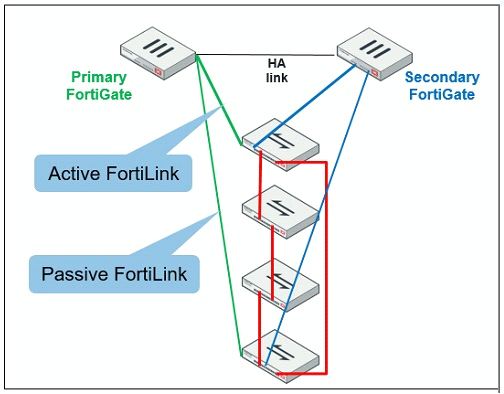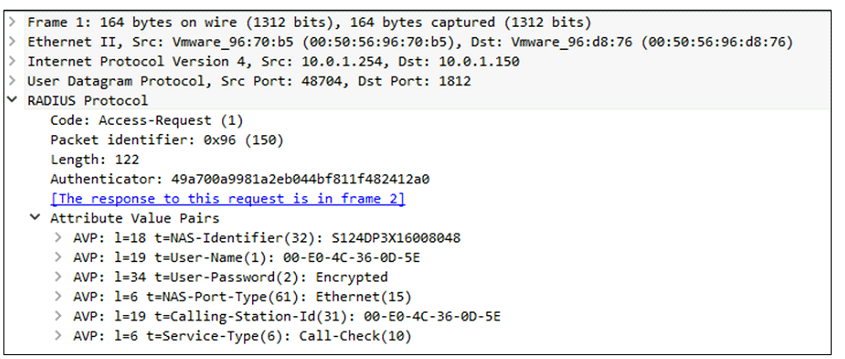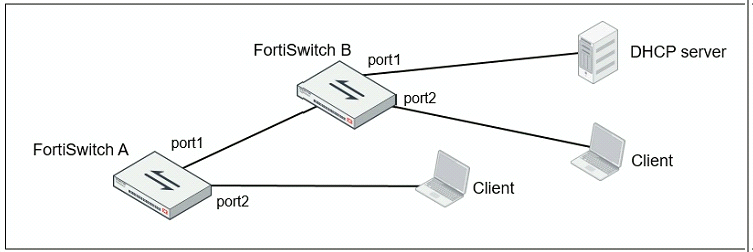Fortinet NSE 7 - Secure Access 6.2 NSE7_SAC-6.2 Exam Practice Test
A wireless network in a school provides guest access using a captive portal to allow unregistered users to self-register and access the network. The administrator is requested to update the existing configuration to provide captive portal authentication through a secure connection (HTTPS) to protect and encrypt guest user credentials after they receive the login information when registered for the first time.
Which two changes must the administrator make to enforce HTTPS authentication? (Choose two.)
Answer : B, D
What does DHCP snooping MAC verification do?
Refer to the exhibit.

The exhibit shows two FortiGate devices in active-passive HA mode, including four FortiSwitch devices connected to a ring.
Which two configurations are required to deploy this network topology'' (Choose two.)
Refer to the exhibit.

Examine the packet capture shown in the exhibit, which contains a RADIUS access request packet sent by FortiSwitch to a RADIUS server.
Why does the User-Name field in the RADIUS access request packet contain a MAC address?
Answer : D
Which statement correctly describes the guest portal behavior on FortiAuthenticator?
Answer : A
Refer to the exhibit.

Given the network topology shown in the exhibit, which two ports should be configured as untrusted DHCP ports? (Choose two.)
Answer : C, D
Examine the following RADIUS configuration:

An administrator has configured a RADIUS server on FortiGate that points to FortiAuthenticator. FortiAuthenticator is acting as an authentication proxy and is configured to relay all authentication requests to a remote Windows AD server using LDAP.
While testing the configuration, the administrator notices that the diagnose test authserver command works with PAP, however, authentication requests fail when using MSCHAPv2.
Which two changes should the administrator make to get MSCHAPv2 to work? (Choose two.)